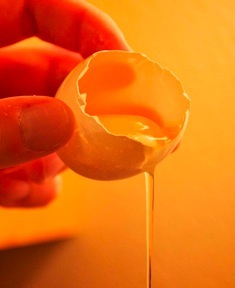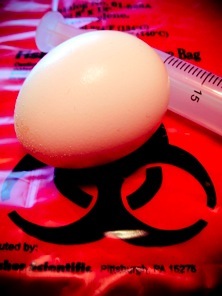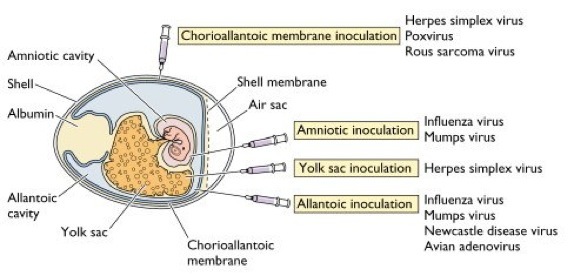From Egg to medical Magic

Vaccine- All or part of a virus that elicits an immune response


An embryonated egg is an excellent medium in which the influenza virus can grow. A small chip or incision is placed along the shell of the egg. At this point, a culture of the virus is placed, via syringe, in a specific location of the egg most suitable to the virus’ growth. In this case, that location is allantois. Experiments have been done to determine if multiple doses can be created from a divided allantois, however, the study indicated that an entire allantois was the most suitable host.

Once the incubation is complete, the virus is extracted and purified. At this point, a single dose of flu vaccine has been created. Immunologists are presently exploring more efficient methods of culturing this vaccine.
The figure below indicates where in the egg various vaccines are cultured.
Ben Axell, 2011
For more information on how the egg is used, the chicken, or how the phylogeny breaks down, follow the links below!
Image: Ben Axell
Image: Ben Axell
Image: Oldenburg, UWL, PowerPoint 2011
Image Credit: Dr. Vincent Racaniello at WWW.Virology.WS
